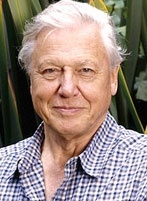Nature's Great Events
Nature's Great Events

A természet csodái
Using state of the art filming technology, Nature's Great Events captures the Earth's most dramatic and epic wildlife spectacles and the intimate stories of the animals caught up in them. From the flooding of the Okavango Delta, in Africa, to the great summer melt of ice in the Arctic and the massive annual bloom of plankton in the northern Pacific Ocean, each of the six programmes features a different event set in one of the world's most iconic wildernesses.
Epizódok

As winter finally passes and the sun climbs over the Arctic, the 4,000,000 square mile ice-sheet rapidly begins to melt, revealing an archipelago of islands, channels and seas. For the masters of the ice, the polar bears, this is a moment of jeopardy but for others like the arctic fox, beluga whales, thousands of lemmings and immense flocks of birds this is the richest place on Earth.

The annual return from the Pacific Ocean of millions of salmon to the streams where they were born in North America in order to spawn and die. Grizzly bears depend for their survival on this event, too.

How one lion family - the Ntudu pride - struggles to survive until the return of the great migration of wildebeest and zebra to the Serengeti in Africa.

The sardine run, which takes place each winter along the South African coast. Dolphins first find the sardines and gannets, seals, sharks and whales follow for the biggest fish supper on the planet.

In Africa, a great flood in the Okavango turns four thousand square miles of arid plains into a wetland. The lush grass attracts elephants, deer, zebra, buffalo and hippos come for the water.

After a seemingly endless icy winter, the Arctic coast of Alaska and British Columbia, and the the northern Pacific which washes it, warm and bloom more intensely then the Amazon forest. plankton, which gets constant feeding in the deep fjords is a feast for the food chain. This starts with herring, seals and whales, which travel for months from the quiet, warm but relatively poor Hawaiian waters. Many species time births to benefit from the short, abundant feeding spray. Many build up fat reserves for the colder rest of the year.
Szereplők Mind megtekintése

|
David Attenborough | Self - Narrator |

|
Joe Stevens | Self - Assistant Producer |

|
Didier Noirot | Self |

|
Roger Horrocks | Self - Assistant Cameraman |

|
Jeff Wilburn | Self - American Narrator |

|
Justin Anderson | Self - Producer |

|
Paul Beilstein | Self - Ice Diver |

|
Simon Werry | Self - Aerial Cameraman |

|
Tom Fitz | Self - Cameraman |

|
Owen Newman | Self - Filmmaker |

|
Steve Benjamin | Self - Skipper |

|
Mike Holding | Self - Cameraman |

|
David Reichert | Self - Cameraman |

|
Martin Dohrn | Self - Specialist Cameraman |

|
Jeff Turner | Self |

|
Shane Moore | Self - Cameraman |

|
Peter Bassett | Self - Producer |
Stáb
| Rendező | Peter Bassett |

|
| Író | Jeff Turner | |
| Producer | Joe Stevens, Karen Bass, Brian Leith, Susan Winslow, Peter Bassett, Hugh Pearson, Justin Anderson, Jeff Turner, Sue Turner | |
| Zenész | Ben Salisbury, Barnaby Taylor | |
| Fényképezte | Warwick Sloss, Justin Maguire, Martyn Colbeck, Didier Noirot, Patrick Morrow, Hugh Pearson, Justin Anderson, Jeff Turner, Sue Turner, Jeff Turner, Mike Holding, Alex Verner, Tom Fitz, Shane Moore, David Reichert, Gavin Thurston | |
Kiadás részletek
| Lemezek száma | 1 |
|---|
Személyes
| Hely | HDD 25 |
|---|---|
| Mennyiség | 1 |
| Index | 20254 |
| Hozzáadva | Júl. 09, 2014 14:55:49 |
| Módosítva | Feb. 18, 2023 14:59:47 |


 English
English  Nederlands
Nederlands  Deutsch
Deutsch  Français
Français  Español
Español  Magyar
Magyar  српски
српски  Dansk
Dansk  Italiano
Italiano  Svenska
Svenska  Slovenčina
Slovenčina  Português
Português 

